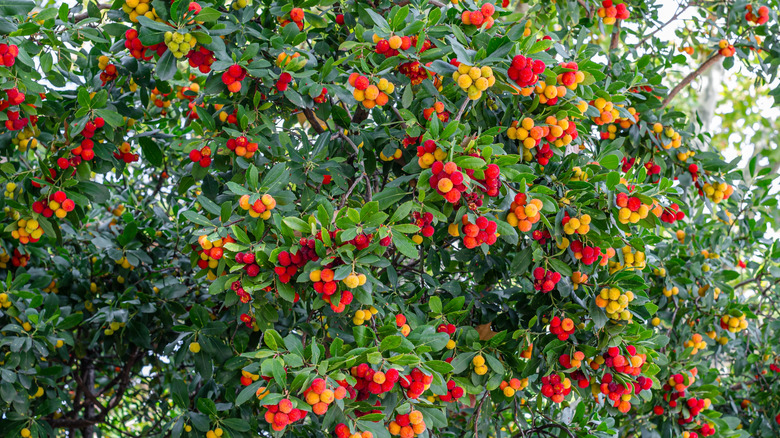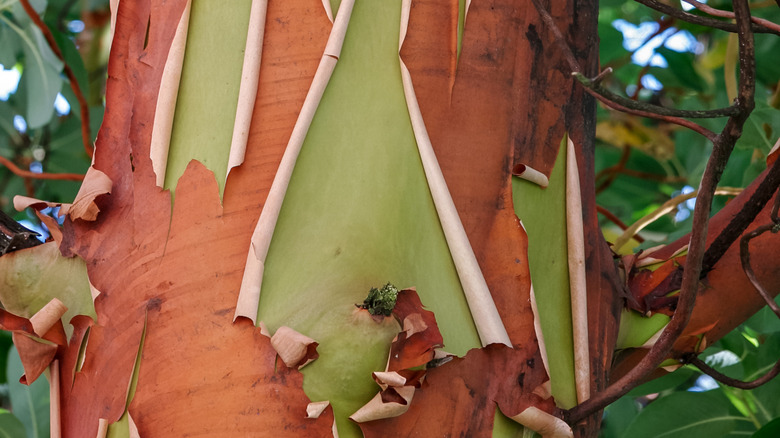Why The Arbutus Is A Popular Tree For Warm Climates
If you're looking for an attractive evergreen tree for your warm climate garden, the Arbutus tree should be a popular choice. It thrives in zones 7 through 10, with species like the Pacific Madrone (Arbutus menziesii) being a common sight around the Pacific Northwest where the weather is generally mild. While the Arbutus genus contains around fourteen different species of both trees and shrubs, the two most notable ones are the Madrone and the Killarney strawberry tree (Arbutus unedo.) What makes these trees so desirable is their attractive appearance. They exhibit lush, dark green foliage and panicles of flowers in spring. The trees also produce small round fruits that mature to an eye-catching red color, and these stay on the tree even when the next set of blooms appear. What you'll also find quite outstanding is the peeling bark that happens periodically throughout the tree's growth, much like many common species of birch trees. The outer bark is a gorgeous rust or cinnamon color that exfoliates to reveal a lighter copper or greenish trunk underneath.
The fruits of Arbutus are edible, and you can easily attract hummingbirds to your yard with one of these colorful trees. Another fascinating fact is that the fruit of one species of Arbutus is used to make brandy in Portugal. On top of that, these trees will also attract pollinators such as bees to your yard. These trees can make quite a statement in your landscape and can be excellent shade providers, thanks to their expansive canopy.
Notable species of Arbutus to consider
One of the most widespread species of Arbutus is the Pacific Madrone, which originates from the western coast of North America. It can grow to a height of 65 feet with a spread of up to 50 feet. This lovely tree produces a spectacular wide canopy and white bell-shaped flowers in panicles, with a sweet honey scent. Both bees and hummingbirds will flock to this tree when it's in bloom. The only drawback is that it can be difficult to establish, but its massive root system makes it an excellent tree to reduce soil erosion while beautifying your yard. There's also a hybrid available, known as Arbutus 'Marina,' which can grow to a height and spread of up to 40 feet, making it an ideal substitute. The flowers on this variety are rosy-pink, and the berries taste a little like kiwi fruit.
Another favored species is the Killarney strawberry tree, native to parts of Europe, Asia, and North Africa. It can reach a height of 35 feet and a spread of 20 feet. This species is naturally multi-stemmed, so you need to train it to grow as a tree by removing any additional stems or suckers at the base. This will allow you to enjoy the impressive shedding bark on a single trunk. While the fruits are sweet, they're generally a little bland but are ideal for making into jellies or jam.

